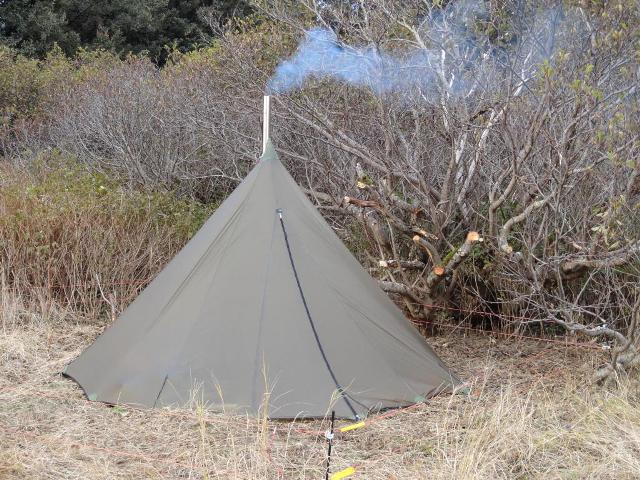Kifaru 6-Man Tipi Review
By Matt Wymer, Rokslide Prostaff
When people think of Alaska, big bears, white sheep, and giant fish come to mind. Few people, however, think of a huntable population of elk living on the last frontier. Alaska’s Raspberry Island is home to several hundred Roosevelt elk. This herd orignitated from a transplant of eight calves from Washington’s Olympic Peninsula in 1929. Eighty five years later, Alaska offers several very hard to draw hunts on Raspberry Island each fall. Consequently, I was thrilled when my friend Billy told me he had pulled a tag and invited me along.
It was on this trip that I experienced my first hunt in a floorless shelter, a Kifaru 6-Man Tipi. Truthfully, this wasn’t my first floorless experience. Back in my native Washington state, our fall deer hunts took place in heavy canvas floorless wall tents. However, with floor liners and all the comforts of home, it just wasn’t the same as going floorless in a modern ultralight tipi.
In Alaska, bugs are a considerable factor and is why the floorless concept never had much appeal to me. As Billy and I prepped for Raspberry, he mentioned he ran a Kifaru 6-Man Tipi paired with Kifaru’s Ultralight Wood Stove. Having a stove to counter the October cold and wet terrain was certainly appealing. I figured that bugs would be minimal by mid fall so I parked my reservations and jumped on board with the idea.
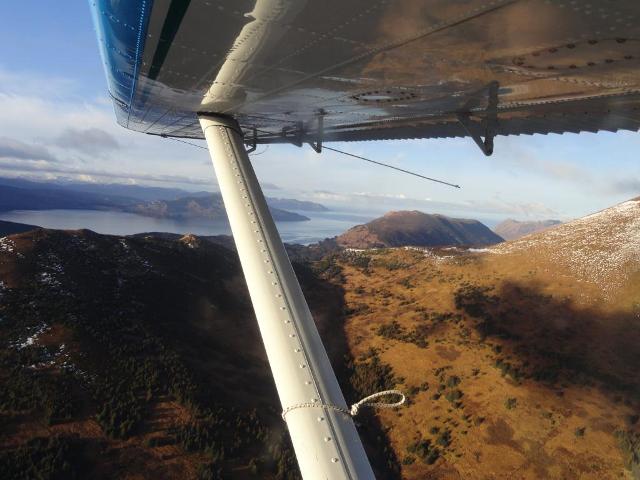
We touched down on Raspberry Island in early October via a Beaver floatplane operated by Seahawk Air. We quickly unloaded and watched as the pilot turned the plane into the wind and took off. As the whine of the engine faded away, the anguished look on Billy’s face told me all was not well. In our rush to board the plane, we’d left our Tipi and SAT Phone in the truck. Suddenly the floorless concept was elevated to a whole new level!
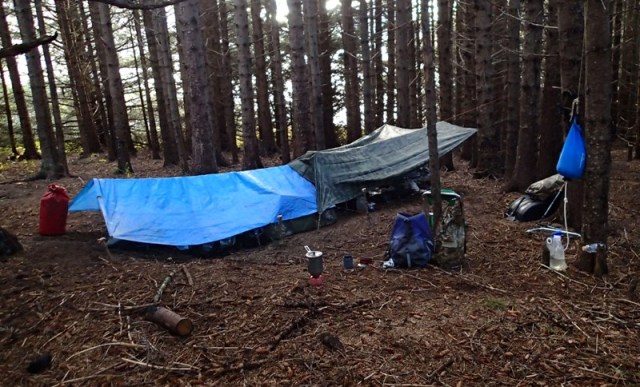
We spent the next three nights surviving one heck of a storm under a make-shift shelter of leaking tarps and a Go-Lite Poncho. On day three, we found two other hunters with a SAT Phone and ordered our Tipi. When the pilot finally touched down a few hours later, it felt like he was bringing us a palace!
The Tipi was quick to set up and easily endured all the weather nature threw our way. This was Billy’s fourth season in the Tipi, yet it’s no worse for the wear. Most everything I’ve seen from Kifaru is built to last. Being able to walk in and out without taking boots off was a nice change compared to my floored backpacking tents. I could easily stand up in the Tipi and found that a very welcome change too.
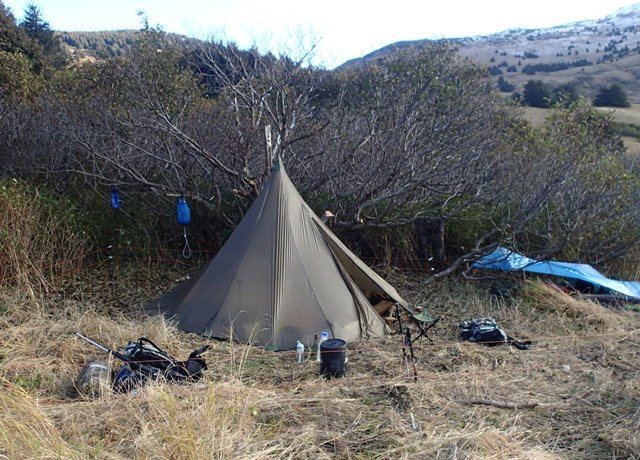
The stove put out plenty of heat, allowing us to dry out our clothes each day. These lightweight stoves are compact so getting a good stoke and letting it simmer over night is not an option. A fully loaded stove might only burn for 30-40 minutes and heat quickly dissipates after that. As such, bring a warm sleeping bag.
Besides the stove and some firewood, we had two cots and most of our gear in the shelter. It made for a tight living space and I found myself brushing against the sides of the Tipi as I moved around.
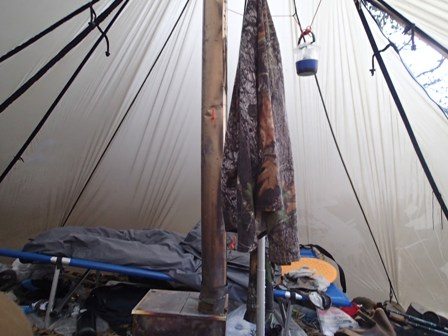
Unless the fire was stoked, the walls would condense the humidty considerably. There was never enough to drip on anything but enough to dampen my shirt or sleeping bag if I came in contact with the walls. We hunted out our remaining days but were not able to tie Billy’s tag on a Raspberry Island bull.
Upon returning, I did some research and found that Kifaru highly suggests purchasing a liner to solve the condensation problem. They guaranteed it would reduce condensation considerably and add an insulating factor to the Tipi as well. Kifaru also said the liner is easy to install and takes up very little interior space. Billy disagreed. He owns the liner but didn’t bring it as he feels it does suck up some living room.
Further research on liners from those who have way more experience than I do, points to them as the chief way to reduce condensation. Some folks wouldn’t even consider a Tipi without a liner while others found ways to mitigate condensation or just were not as bothered by it. Without testing a liner myself, I think if I were buying a Tipi, I may skip the liner and just order a larger-sized Tipi. This would give me more floor space and keep me away from the walls.
I did have two minor issues with the Tipi. One, the main zipper does not seal allowing a small amount of water through. In a heavy downpour, this is something to keep an eye on. Kifaru states that this is intentional design to keep the tent from being airtight. This reduces the chance of carbon monoxide poisoning.

The other is that I would like to see tie-outs on the walls a few feet up from the skirt. This would allow me to pull the walls out for more space and possibly create a better angle for condensation to run off.
Concerning the floorless concept, while I’m not yet fully vested in the idea, I do see the benefits. I still prefer the fully contained environment of a standard tent, especially in bug season. Bug netting is available, but I’d need to test its effectiveness before making a statement. Talking with Aron Snyder of Kifaru, he recommends just bringing bug coil. A few ounces can last an entire hunt and does a great job of keeping insects out of the tent according to him.
If I were to buy a Kifaru Tipi for my own use, I’d lean heavily toward their 8 or 12-man option with a larger stove. I’ll stick with my traditional tent for early season and backpack hunts but for later season or base camp adventures, having a stove and the ability to stand up in my shelter makes a Kifaru Tipi a highly desirable option.
You can discuss this article here
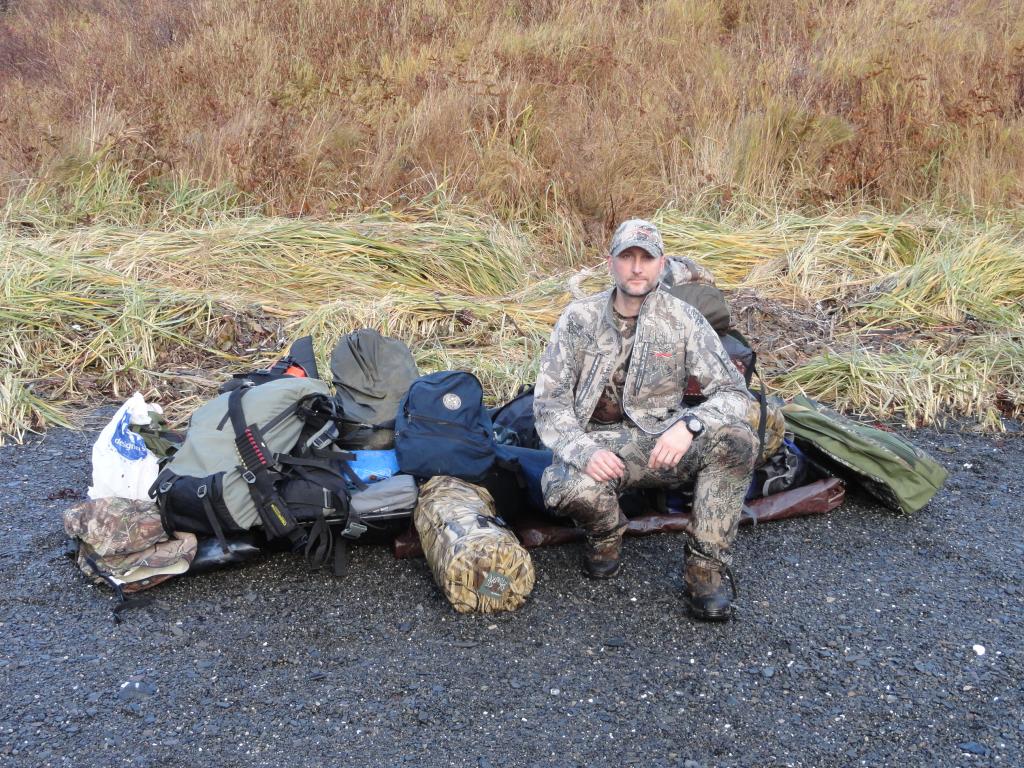
Matt Wymer is a hunter, writer, and blogger residing on the Last Frontier. You can follow his blog at Remote Pursuits














